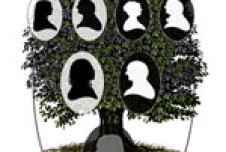Last year, Intel released a print advertisement for its Core 2 Duo processor that caused an uproar. The ad, set in an office, featured six African-American men dressed like Olympic sprinters appearing to bow down to a Caucasian businessman. In response to criticism, the company quickly terminated the ad campaign, and several Intel executives made public apologies for it.
One employee at Intel, a former student of mine, told me the ad was a “big deal” for African-American employees working there; understandably, many people at Intel and beyond were surprised that the company, with so many checks along the way, could have been so blind to the insulting nature of the ad.

I’ll be honest: I wasn’t that surprised. For years, I’ve studied a variety of American workplaces, and I’ve found that prejudice and discrimination are alive and well within them. Though often unintentional, these prejudices aren’t just a problem because of the emotional toll they take on victims, and they aren’t just limited to discriminatory hiring practices. They can be insidious, creeping into many activities that affect the performance of individual employees, teams of employees, and the organization as a whole.
Fortunately, my research has identified three steps managers—or, indeed, anyone in a leadership position—can take to reduce prejudice and its negative effects.
1. Publicize strengths
My research has found that if someone is a member of a group that has historically been underrepresented in a workplace—whether it’s women, African Americans, or another group—coworkers will expect that person to perform poorly on tasks that have not typically been performed by members of their group. This is true no matter how skilled the person actually is at that task. For example, coworkers expect women engineers to perform worse than men. These expectations, unfortunately, are often self-fulfilling. Years, even generations, of prejudice weigh too heavily on the person and affect performance, even if they haven’t faced any explicit prejudice within the workplace.
However, I’ve also found that when coworkers are made aware of that person’s expertise, the person’s work no longer suffers. In fact, they excel, as does the rest of their team. So how can colleagues learn of this person’s expertise? One way is for the person to step up and advertise their own talents. But some people just aren’t that outgoing and willing to hype their skills.
An effective alternative is for a manager to explicitly tell coworkers how skilled this person is, especially when the person joins a new work group. Can this seem patronizing? Perhaps. But my research suggests that it has a strong and positive impact—not just on this single person’s performance, but on the performance of the entire group. This may be because the employee receives a confidence boost, and the rest of the group is relieved of the discouraging notion that they’ll have to “carry” a poor performer.
2. Emphasize shared fate
Unfortunately, diverse workplaces often have lower productivity and camaraderie than homogenous workplaces. But managers can change this by encouraging people to recognize their common commitments to their organization rather than their individual, superficial differences.
In fact, I’ve found that when an organizational culture emphasizes employees’ shared fate—the fact that they’re all going to succeed or fail together as a group—diverse teams of employees are more productive and creative than homogenous ones. An organization’s leaders can reinforce this sense of shared fate by, for example, rewarding entire teams rather than only individual members for their work. While such strategies may seem intuitive, surprisingly few organizations practice them consistently.
3. Endorse political correctness (sometimes)
My research has also examined how people react to political correctness, which my colleagues and I define as censoring language that might be offensive to members of other demographic groups. Many managers are reluctant to advocate political correctness in the workplace, assuming that it stifles the free exchange of ideas.
In our research, we either encouraged or discouraged teams to use politically correct language in their discussions, then we observed how these teams performed on a creativity task. In more homogenous teams, political correctness did seem to constrain creativity.
But in more diverse teams, we found that encouraging political correctness actually boosted creativity, while also promoting sensitivity to members’ differences. It seemed that, though people are often anxious about cross-group interactions, political correctness provided clear ground rules for their conversations, promoting comfort and trust and enabling team members to focus their attention more completely on the task at hand.
Overall, my research suggests that even after organizations achieve a diverse workplace, managers still need to take deliberate and consistent steps to address prejudice. But fortunately, we have good reason to believe that these efforts pay off, fostering more just, harmonious, and productive workplaces.





Comments